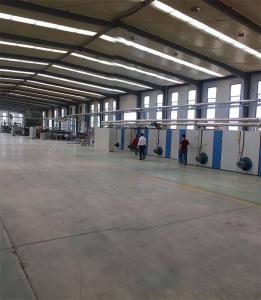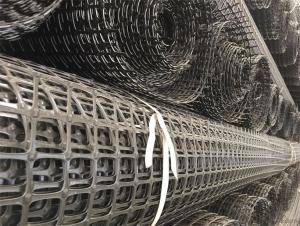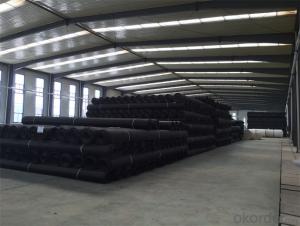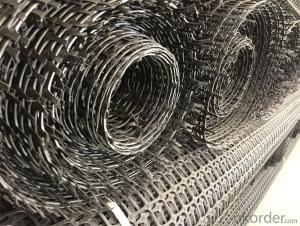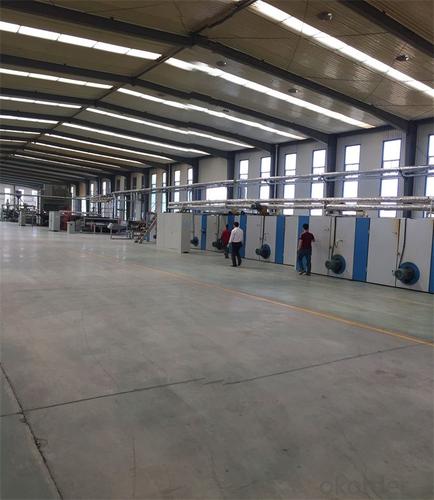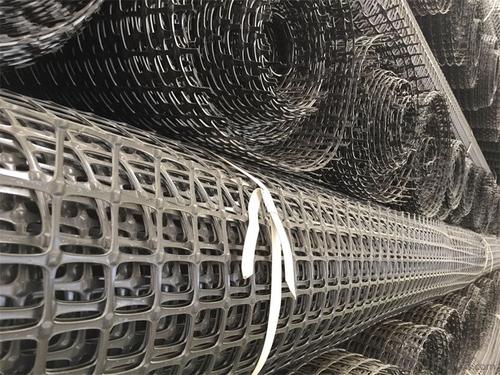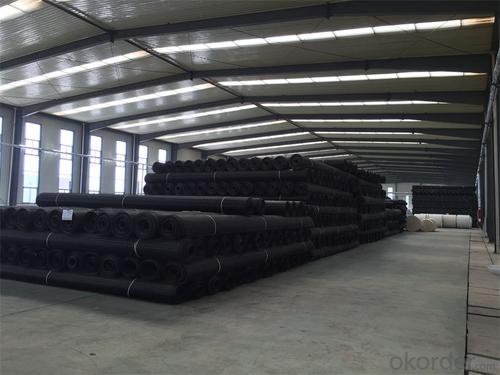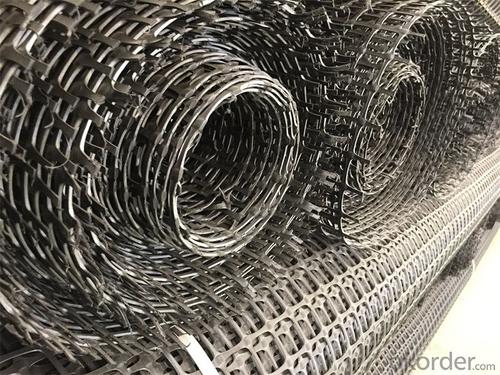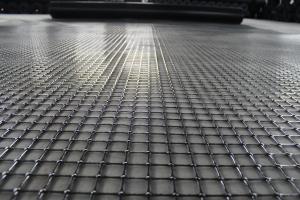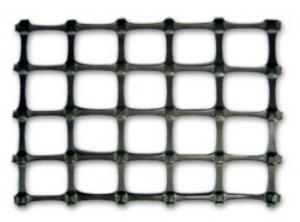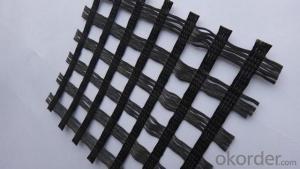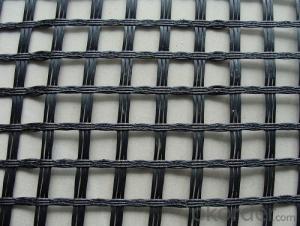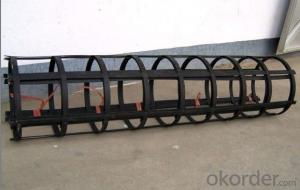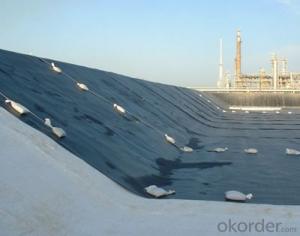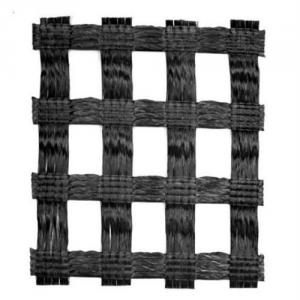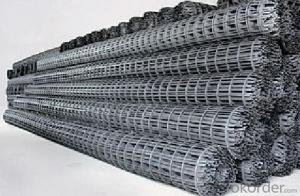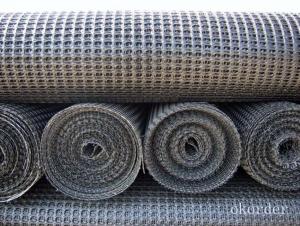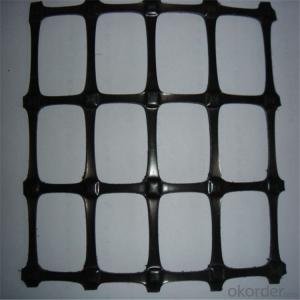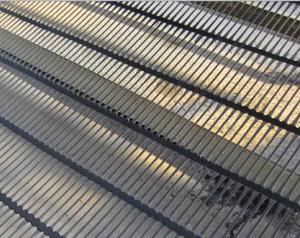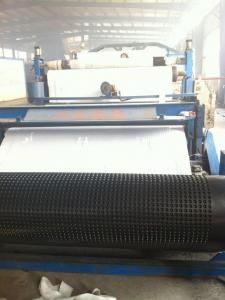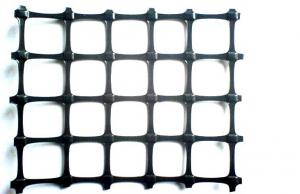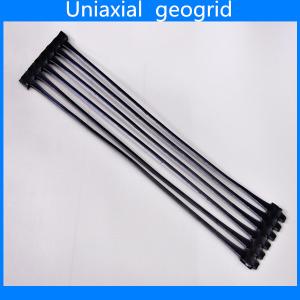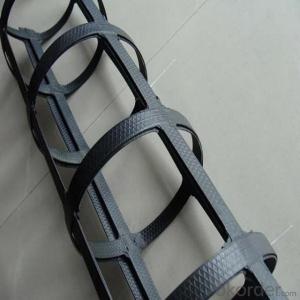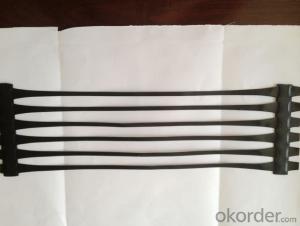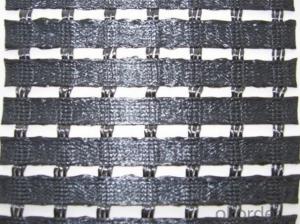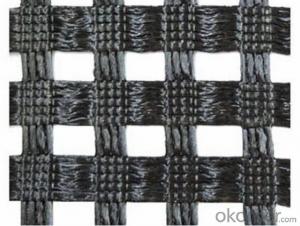High Tensile Strength Uniaxial Geogrid Geocells for Driveways
- Loading Port:
- Tianjin
- Payment Terms:
- TT OR LC
- Min Order Qty:
- 20000 m²
- Supply Capability:
- 50000000 m²/month
OKorder Service Pledge
OKorder Financial Service
You Might Also Like
Fiberglass Geogrid Introduction:
Fiberglass geogrid is a kind of planar mesh material using alkali-free fiberglass yarn as base body and then coated with high quality modified asphalt. It is warp knitted with oriental structure which gives full play of yarn strength and improves its mechanical property to make the product high tensile, tearing and creep-resistant. Moreover, the composite property of coating with asphalt makes full protection of the fiberglass matrix and greatly improves its wear and shear resistance. All the advantageous functions make the product have a good performance in pavement strengthening, track cracking and solving difficulties of strengthening the bituminous pavement.
Fiberglass Geogrid Features:
1. Light weight, high tensile strength, high modulus, low elongation and good toughness.
2. Corrosion resistance, no long-term creep, long life span.
3. Good physical and chemical stability and good thermal stability.
4. Resistant to fatigue cracking, high-temperature track and low temperature shrinkage cracking.
5. Delaying and decreasing crack reflection.
Specifications | PET20-20 | PET30-30 | PET40-40 | PET50-50 | PET80-80 | PET100-100 | PET120-120 |
Elongation(%) | 10%~15% | ||||||
Vert Tensile strength(KN/m) | 20 | 30 | 40 | 50 | 80 | 100 | 120 |
Horiz Tensile strength(KN/m) | 20 | 30 | 40 | 50 | 80 | 100 | 120 |
Grid(mm) | 12.5×12.5 20×20 24.5×24.5 | ||||||
Width(m) | 1—6 | ||||||
Fiberglass Geogrid Application:
1. Road surface asphalt overlay construction engineering; Asphalt layers
reinforcement.
2. Converting old cement concrete road into composite road; Restraining
reflection cracking caused by block shrinkage.
3. Road extension; Preventing and controlling the cracking caused by new
and old combination and uneven settlement.
4. Treatment of the conjunction between tunnel and bridge or foundation.
Packaging & Shipping:
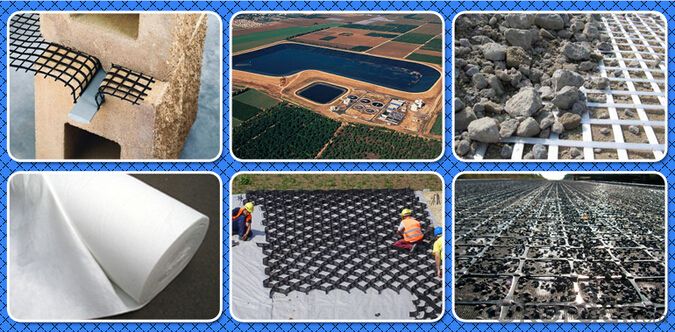
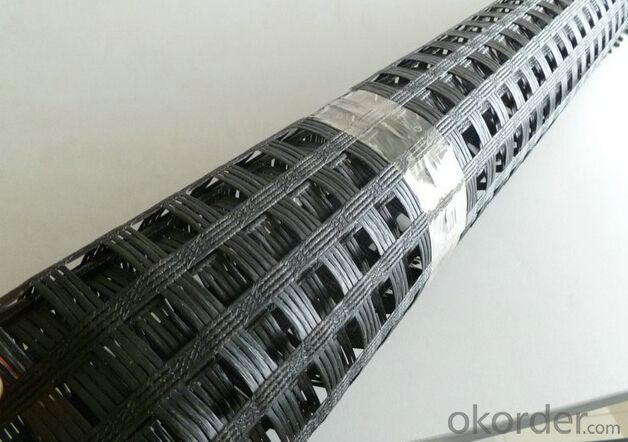
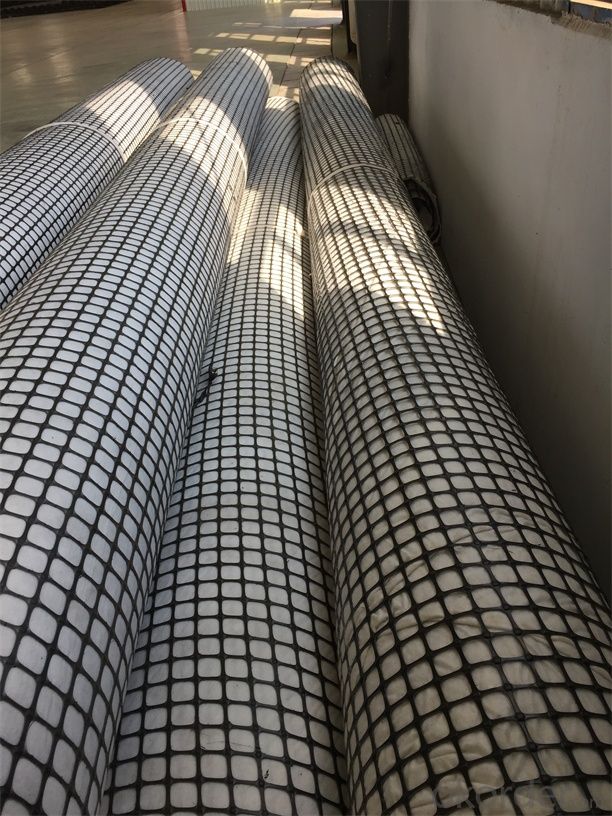
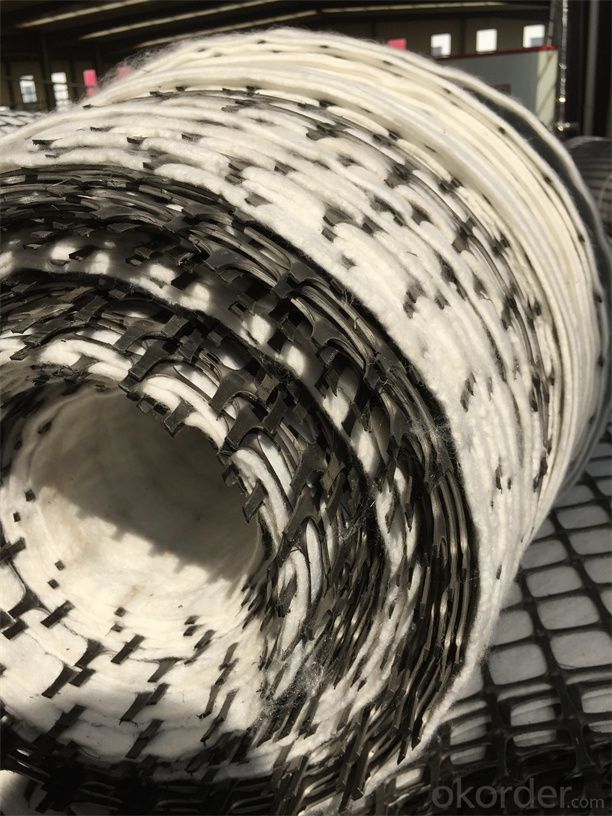
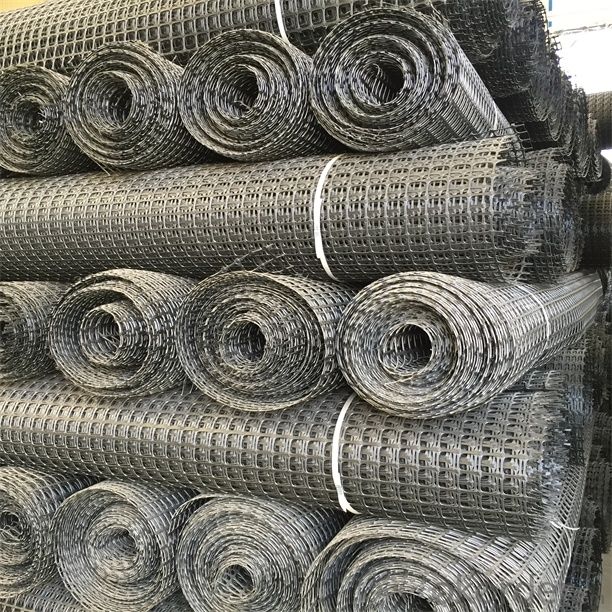
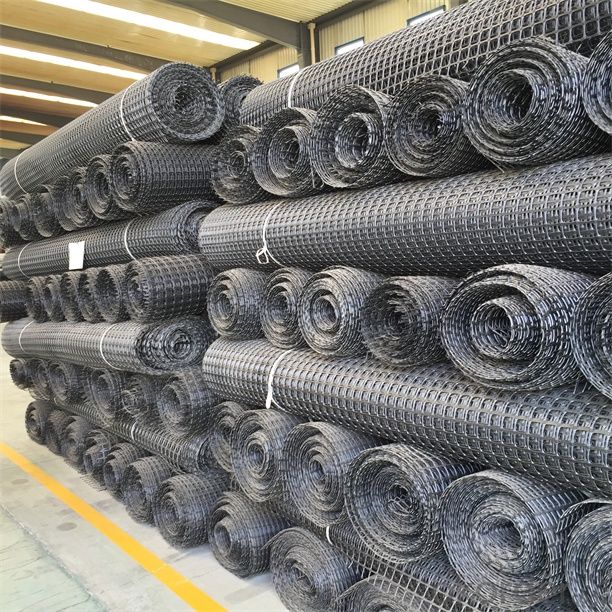
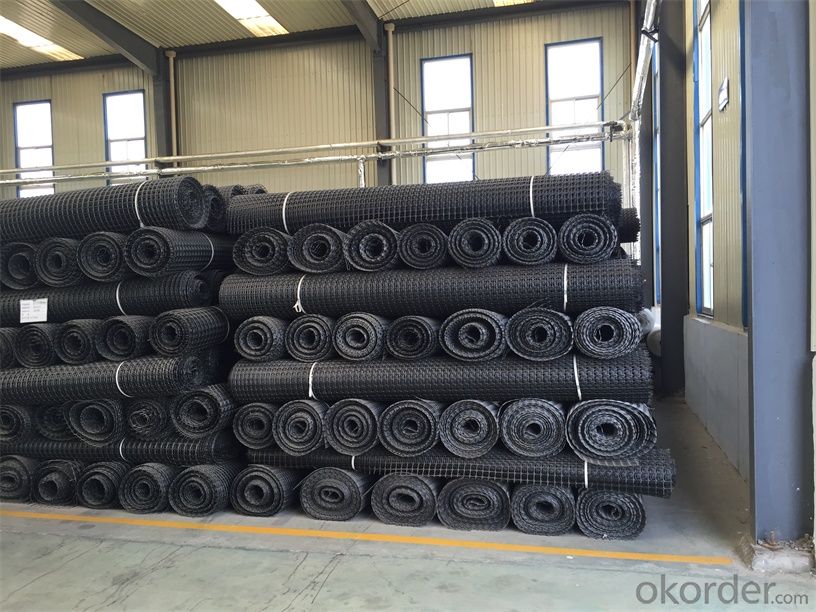
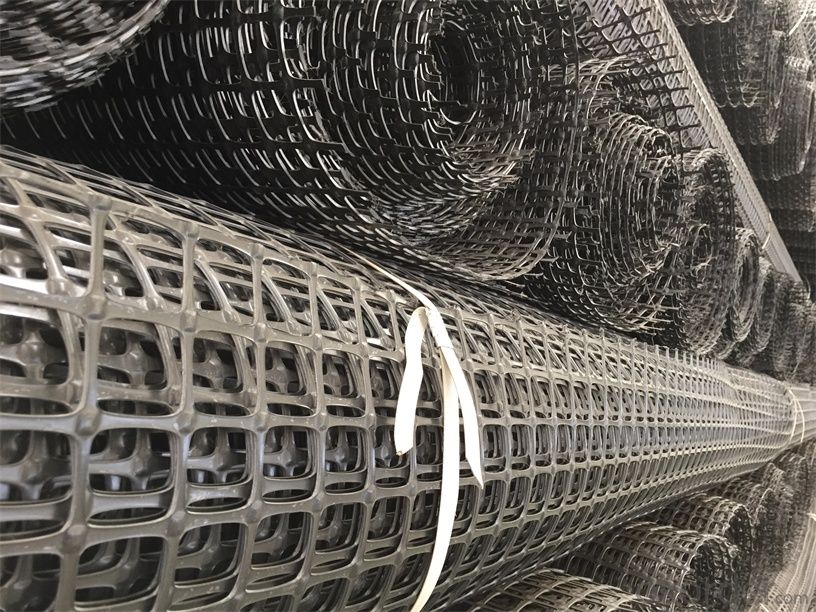
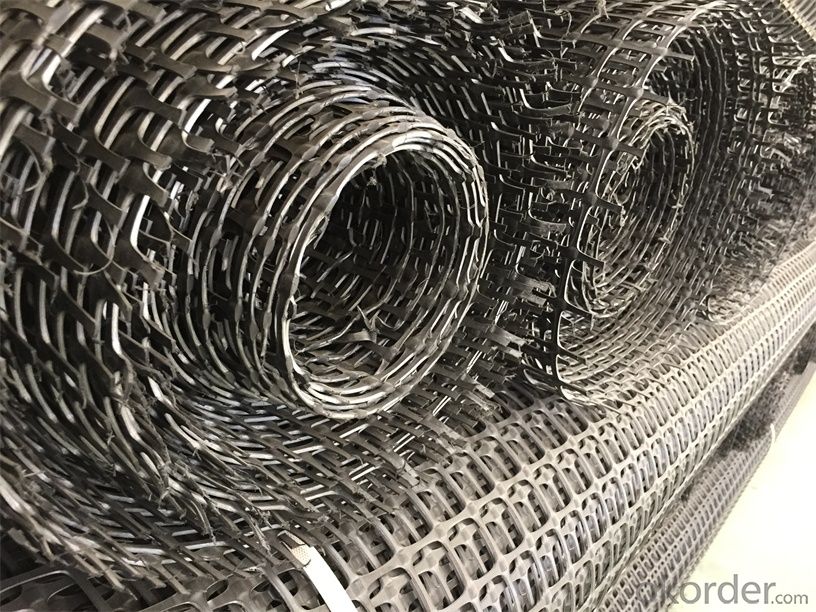
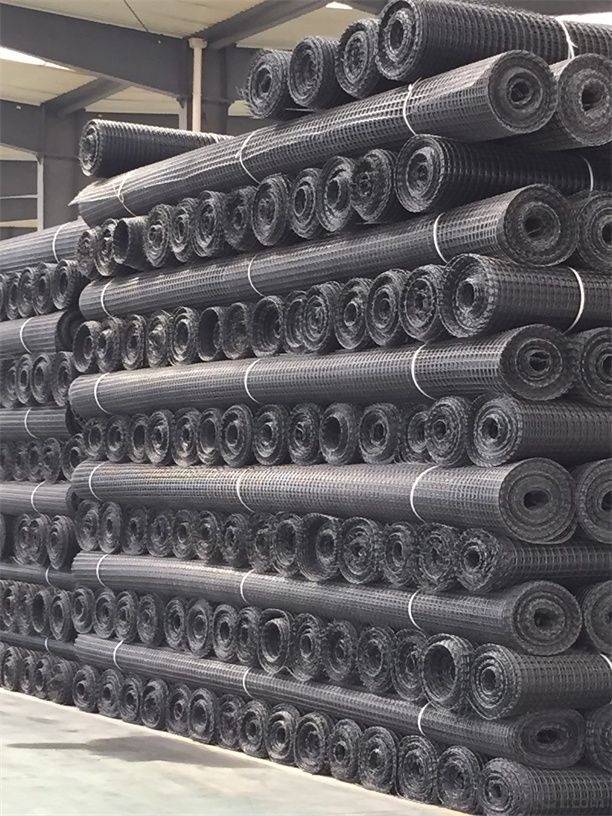
FAQ:
1. How to order your geogrid ?
a) Tensile strength in warp & weft direction
b) Grid size
c) Roll Width and length
d) Quantity
2. What is the Payment term?
a) TT
b) LC AT SIGHT
c) cash
d) 30% contact value as deposit ,the blance 70% be paid after received the copy of bl .
3. Delivery time
a) 19-25 days after received your depsit .
4. What is MQQ ?
a) 2500 m2 as MQQ , we can also produce sample for you .
Welcome to send your inquiry to us, and if you have any question, we can also help you.
- Q: How to connect two-way geogrid
- Transverse 10cm overlap with plastic tape binding on the grid
- Q: How do geogrids help in reducing the risk of differential settlement of structures?
- Geogrids help in reducing the risk of differential settlement of structures by providing a stable base and distributing the load more evenly across the soil. This prevents uneven settling and minimizes differential settlement, which can lead to structural damage and instability.
- Q: EG90R what is the geogrid material?
- This is the tension is of better quality ninety KN generally has two kinds of ethylene to ethylene and propylene, soft texture of high tensile yield but the corresponding price higher it will generally use propylene if necessary can contact me.
- Q: Unidirectional tensile plastic geogrid manufacturers which good
- (1) the plastic geogrid plastic geogrid is a kind of polymer material with square or rectangular shape which is formed by stretching, and it can be used as one kind of unidirectional stretching and biaxial stretching according to the different direction of stretching in the manufacturing process. The utility model is punched on the extruded polymer plate (raw material is polypropylene or high-density polyethylene), and then directionally stretched under the heating condition
- Q: Are geogrids suitable for use in soil reinforcement for coastal protection structures?
- Yes, geogrids are suitable for use in soil reinforcement for coastal protection structures. They are commonly used to enhance the stability and strength of soils in coastal areas, providing effective erosion control and protection against wave action and tidal forces. Geogrids help to distribute loads and reinforce the soil, preventing erosion and maintaining the integrity of coastal protection structures.
- Q: Can geogrids be used in shoreline protection against wave action?
- Yes, geogrids can be used in shoreline protection against wave action. Geogrids are synthetic materials that provide reinforcement and stabilization to soil and are commonly used in various civil engineering applications, including coastal protection. They can be used to enhance the stability of shorelines by preventing erosion and reducing the impact of wave action.
- Q: Can geogrids be used in reinforcement of bridge abutments and wing walls?
- Yes, geogrids can be used in the reinforcement of bridge abutments and wing walls. Geogrids are commonly used in civil engineering projects to provide stability and increase the load-bearing capacity of soil. By placing geogrids in the backfill soil behind bridge abutments and wing walls, they can help distribute the loads and prevent soil erosion. This reinforcement technique improves the overall structural integrity of the bridge and enhances its long-term performance.
- Q: How many inspection batches of Geogrid
- 1, plastic geogrid: according to the provisions of "geosynthetics plastic geogrid" GB/T17689-2008: the same materials, the same formula and the same under the condition of the technology of production of the same specifications of plastic geogrid as a group, each batch number shall not be more than 500 volumes, 7 volumes of less than 500 days of production period in 7 days for a number of production.
- Q: Can geogrids be used in mining and geotechnical applications?
- Yes, geogrids can be used in both mining and geotechnical applications. In mining, geogrids can be used for reinforcement and stabilization of slopes, mine walls, and tailings dams. They can also be used for erosion control and soil stabilization during excavation and reclamation activities. In geotechnical applications, geogrids are commonly used for soil reinforcement, retaining walls, embankments, and pavement construction to improve the stability and load-bearing capacity of the soil.
- Q: What are the differences between uniaxial and biaxial geogrids?
- Uniaxial geogrids have strength and stiffness in one direction, making them ideal for applications that require reinforcement in a single direction. Biaxial geogrids, on the other hand, have strength and stiffness in both directions, allowing them to provide reinforcement and stability in multiple directions. This makes biaxial geogrids more versatile and suitable for a wider range of applications, including soil stabilization, slope reinforcement, and retaining wall construction.
Send your message to us
High Tensile Strength Uniaxial Geogrid Geocells for Driveways
- Loading Port:
- Tianjin
- Payment Terms:
- TT OR LC
- Min Order Qty:
- 20000 m²
- Supply Capability:
- 50000000 m²/month
OKorder Service Pledge
OKorder Financial Service
Similar products
Hot products
Hot Searches
Related keywords
